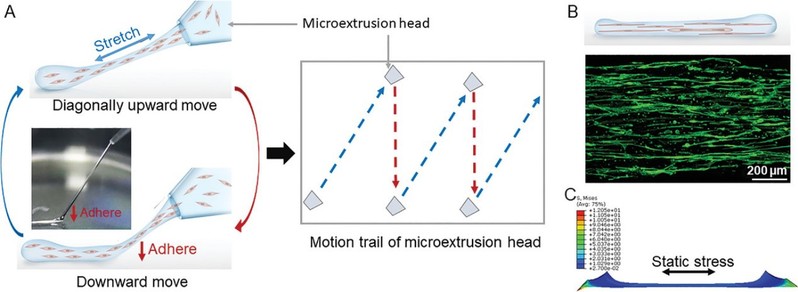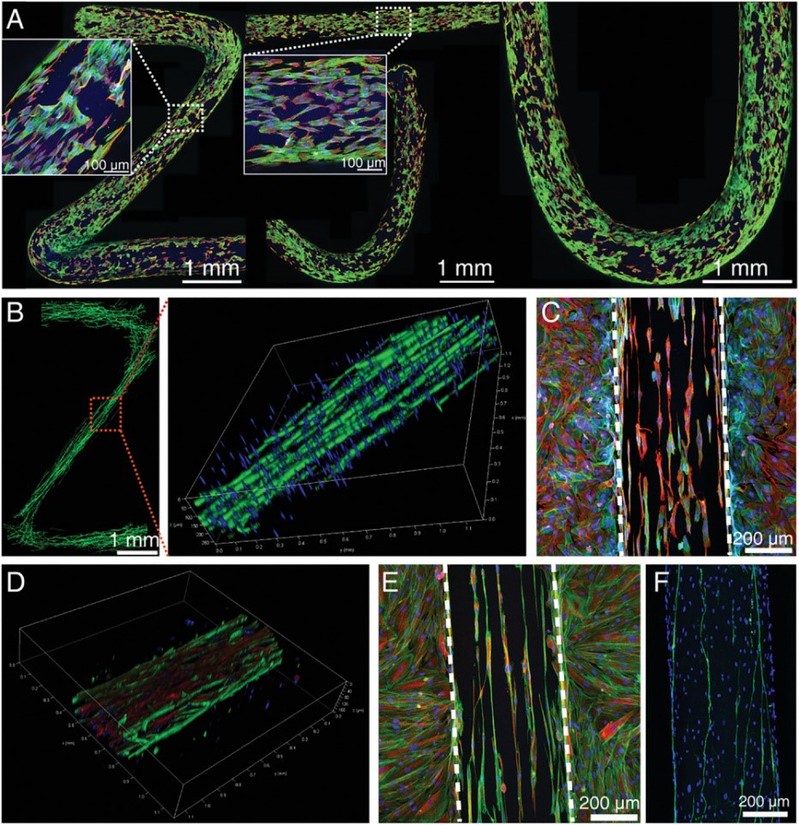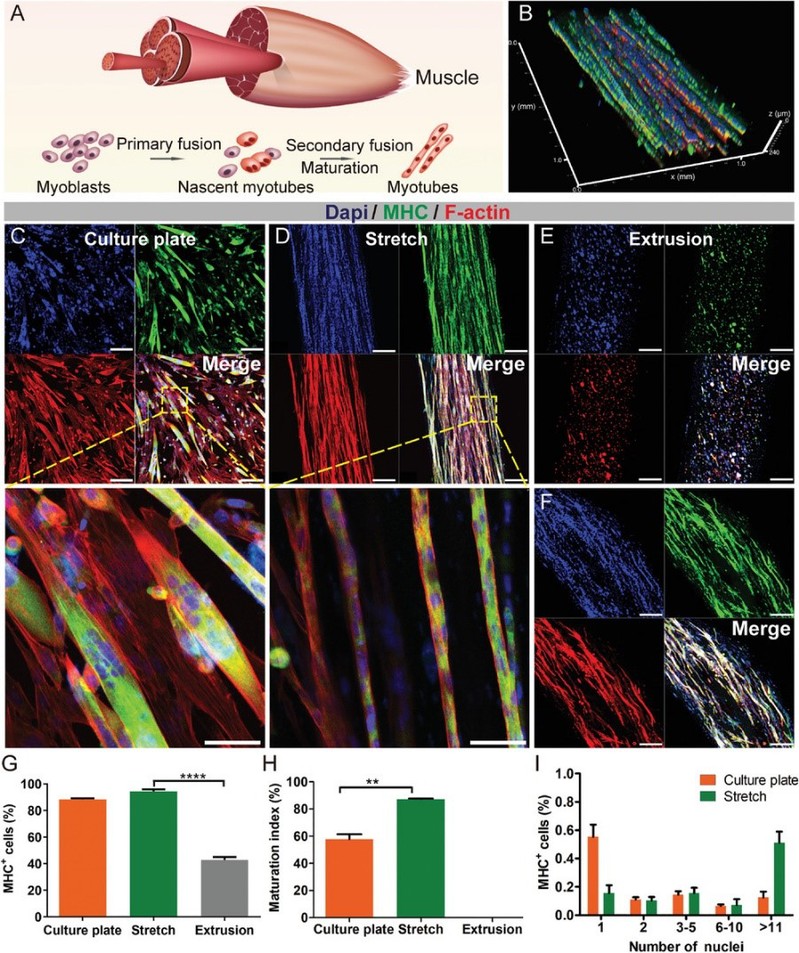Tissue engineering techniques have enabled to replicate the geometrical architecture of native tissues but usually fail to reproduce their exact cellular arrangements during the fabricating process, while it is critical for manufacturing physiologically relevant tissues. To address this problem, professor Liquan Huang and his collaborators proposed a “sewing-like” method of controlling cellular alignment during the fabricating process.

By integrating the stretching step into the fabricating process, a static mechanical environment is created which, in turn, regulates the subsequent cellular alignment, elongation, and differentiation in the generated tissues. With this method, patterned cellular constructs can be fabricated with controlled cellular alignment.

Moreover, this method shows a potent capability to fabricate physiologically relevant skeletal muscle constructs in vitro by mechanically inducing myoblast fusion and maturation.

As a potential clinical application, aligned myofibers are directly fabricated onto injured muscles in vivo, which repair the damaged tissues effectively. The results above on tensile stress-induced cellular orientation, elongation, and oriented division provide clues for understanding tissue development. Furthermore, it shows that this “sewing-like” process can be adapted to extrusion-based 3D bioprinting techniques easily, which means that this “sewing-like” process can be applied to standardized and mechanized manufacturing of engineered tissues with precise control of cellular arrangements in the future.
The work was published by Advanced Health Materials and could be accessed at https://onlinelibrary.wiley.com/doi/10.1002/adhm.202100934.
About Professor Liquan Huang
Dr Liquan Huang graduated from Department of Biology, Yale University in 1996 and became a professor in College of Life Sciences, Zhejiang University from 2013. He is currently an Adjunct Professor of Shanghai Institute for Advanced Study of Zhejiang University (SIAS).
Dr Huang has been working on the molecular biology of taste and smell for many years. In 1996, he established and optimized single taste bud cell transcriptome analysis method and made many important findings, which were published in two Nature Neuroscience papers and one Nature Genetics paper. Thus, he is one of the first scientists who could successfully utilize this powerful single cell approach. His ongoing projects are mostly focused on the regeneration of mamalian taste bud cells and olfactory sensory neurons, and the function of taste and olfactory receptors and their signaling proteins in extra-oral/-nasal tissues, including: The effect of taste signal transduction interruption on the proliferation and differentiation of gustatory stem cells; Regulation of olfactory stem cells’ proliferation and differentiation; Interactions between taste/olfactory receptors and their ligands and its correlation with ligands’ toxicity; Interactions between taste/olfactory receptors and pathogenic microbes; Expression and function of taste/olfactory receptors and their signaling proteins in the extra-oral/nasal organs and organoids
About SIAS
Shanghai Institute for Advanced Study of Zhejiang University (SIAS) is a jointly launched new institution of research and development by Shanghai Municipal Government and Zhejiang University in June, 2020. The platform represents an intersection of technology and economic development, serving as a market leading trail blazer to cultivate a novel community for innovation amongst enterprises.
SIAS is seeking top talents working on the frontiers of computational sciences who can envision and actualize a research program that will bring out new solutions to areas include, but not limited to, Artificial Intelligence, Computational Biology, Computational Engineering and Fintech.

